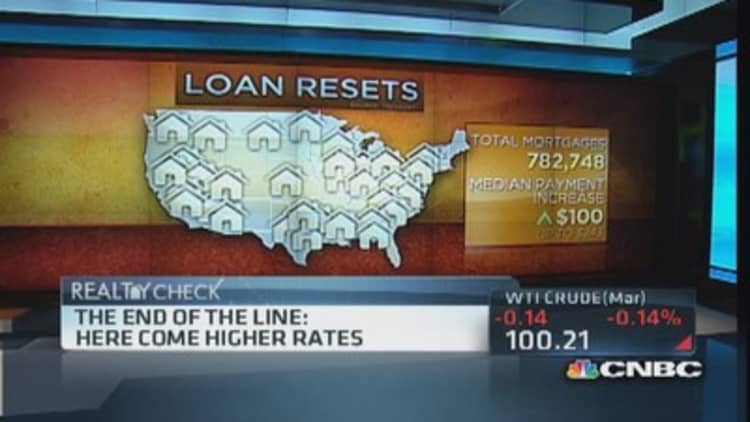
It may seem like we're still in the early innings of the housing recovery, but five years have already passed since the Obama administration launched its housing bailout. Now, the Home Affordable Modification Program is expiring.
Over the course of the past five years, 1.2 million borrowers received permanent mortgage modifications as a part of the program, most of them seeing their interest rates reduced to approximately 2 percent, well below current average rates.
The program has come under fire for its high default rate. As of Dec. 31, 894,410 borrowers were still in active modifications. More than 306,000 redefaulted on the loans, according to a report last summer from the Special Inspector General of the Troubled Asset Relief Program.
The program launched in April 2009, and the plan was to keep borrowers at a low rate for five years, let them and the broader economy recover, and then start bringing them back to current market rates. As the program was slow to ramp up, the first modifications were not logged until September 2009, but come this fall, about 30,000 borrowers will see their rates bump up 1 full percentage point. Their rates will then rise each year until they reach the current market rate, which now stands at 4.5 percent but is expected to rise over the next few years as hundreds of thousands more loans start to reset.
"If we see this leading to much more hardship than we expect right now for homeowners, we're going to be dynamic in our policy response. We're not going to get behind the curve on this," said Tim Bowler, assistant Treasury secretary for financial stability.
(Read more: Beyond 'frozenomics': What's hurting the housing market)
Among those homeowners who are scheduled to have mortgage interest rate and payment increases (88 percent of those now in the program), the median interest rate on their loan was 6.4 percent before modification and their median monthly payment was $1,421, the special inspector general reported in January. With the modification, the average monthly payment fell to $773. Those payments will begin to go up about $100 a year for the next three years for the average borrower, but some borrowers could see far higher rate resets.
"This is something that is going to blindside a lot of people," said Bankrate.com's Greg McBride, who initially argued that Treasury was just kicking the can down the road on the housing crisis. "This was 'extend and pretend,' no question about it. This was never designed to be something that solves the problems."
But Treasury officials argue this program not only lowered monthly payments for borrowers, it allowed them to pay a substantial amount into the principal. That, in addition to the recovery in home prices, has brought many of them up from underwater on their mortgages.
(Read more: Foreclosures could rise if Congress doesn't help)
While the average borrower nationwide will see just over a $200 increase in the monthly payment after three years of resets, some borrowers in higher-cost locations will see dramatic jumps because they had larger mortgages to begin with. California will arguably be hardest hit, as it saw by far the most modifications under the program. More than 230,000 Californians are in active permanent modifications, more than twice as many as in Florida, which had the next largest pool. The average monthly payment increase in California will be $297, according to the inspector general, but could be as high as $1,724.
The first 30,000 borrowers will not see their rates reset until September, the fifth anniversary of when the clock started for the first modifications under the program. In 2015, however, approximately 300,000 loans will begin to reset—when mortgage rates are expected to be higher due to the Federal's Reserve's tapering of its bond-buying.
Mortgage delinquency rates have been coming down dramatically in just the last year, dropping below 4 percent at the end of 2013 for the first time since 2008, according to TransUnion. Treasury officials say they will be watching that rate very closely as the modifications begin to reset, but they have no plans to make any changes to the program.
"We don't necessarily want to implement a policy change in the first quarter of 2014 that could cost a substantial amount of money or be ineffective without having a better picture of the facts," said Bowler.
(Read more: If investors bail on housing, what then?)
—By CNBC's Diana Olick. Follow her on Twitter @Diana_Olick.
Questions?Comments? facebook.com/DianaOlickCNBC


